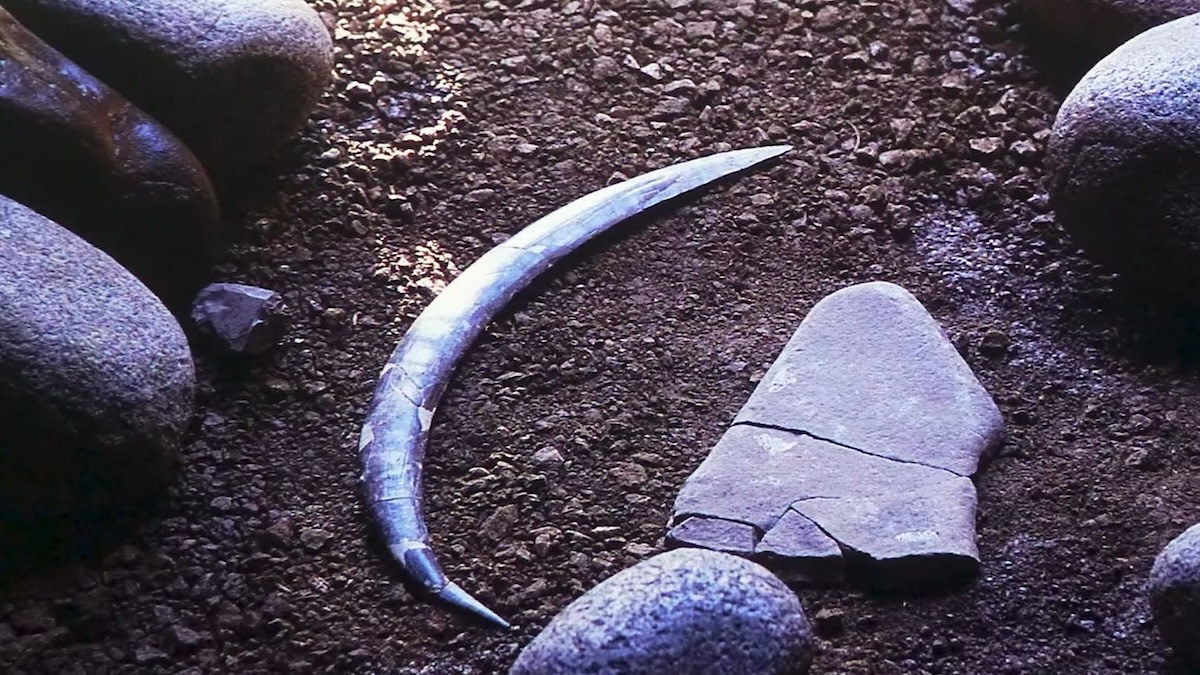Ancient Hunting Boomerang is Twice as Old as Archaeologists Originally Estimated

This month, a traditional hunting weapon was revealed to be much more traditional than previously thought.
In 1985, a boomerang carved out of mammoth tusk was discovered in the Obłazowa Cave in southern Poland. This thing is big: more than two feet long, perfectly semi-circular, and extremely sleek for an ancient weapon. Although the mammoth ivory itself was too delicate to be sampled for carbon dating when it was found, the surrounding artifacts led scientists to place the boomerang at around 18,000 years old.
But the cave was occupied for a much longer period, starting with the Neanderthals and continuing through the Middle Ages. Recently, a team of scientists carbon-dated a series of human finger bones from the archeological layer around the boomerang, and made a shocking discovery: the bone–and by extension, the boomerang–was in fact 40,000 years old.
This news has absolutely rocked the boomerang world. Researchers had theorized that the earliest boomerangs were from only around 20,000 years ago, based on the dating of rock art from Kimberly, Australia, that depicts people wielding the weapons. The earliest example of a boomerang was discovered in 1974 in the Wyrie Swamp of South Australia and dates from about 10,000 years ago.

Some headline writers have been using the new date of the Obłazowa artifact to claim that boomerangs in general are European, not Australian, but that’s pretty obvious clickbait. Australians were no doubt hucking boomerangs for a long, long time before they got around to painting them.
Now, what you really want to know is: can this forty-thousand-year-old boomerang fly? Glad you asked. In 1994, a group of German researchers made a plastic replica of the Obłazowa specimen and gave it to professional boomerang-thrower Fridolin Frost to see if it had The Right Stuff. Turns out whoever made this thing really knew what they were doing: the replica flew as far as 165 feet at speeds of almost 50 miles per hour.
Here’s a quote from an account of the throwing study: “The average trajectory was nearly ideal from a hunting perspective: thrown from hip height, the projectile never rose above approximately 1.5 meters at the apex of its arc and consistently dropped to the ground only during the final 3 meters of its flight.”
Hunting boomerangs like this are typically the non-returning kind: they’re designed to fly with a flat, consistent trajectory, but they don’t circle around and come back to the thrower’s hand. The largest hunting boomerangs can be used to go after medium-sized game like emu or kangaroo, but most commonly they’re used to hunt birds, smaller mammals, and even fish in shallow water.
Now, I don’t know if anyone reading this is going to trade in their shotgun anytime soon, but an afternoon going after pheasants with a huge, mammoth-ivory boomerang sounds like time well spent to me.
Feature image via Wikimedia Commons.





Conversation